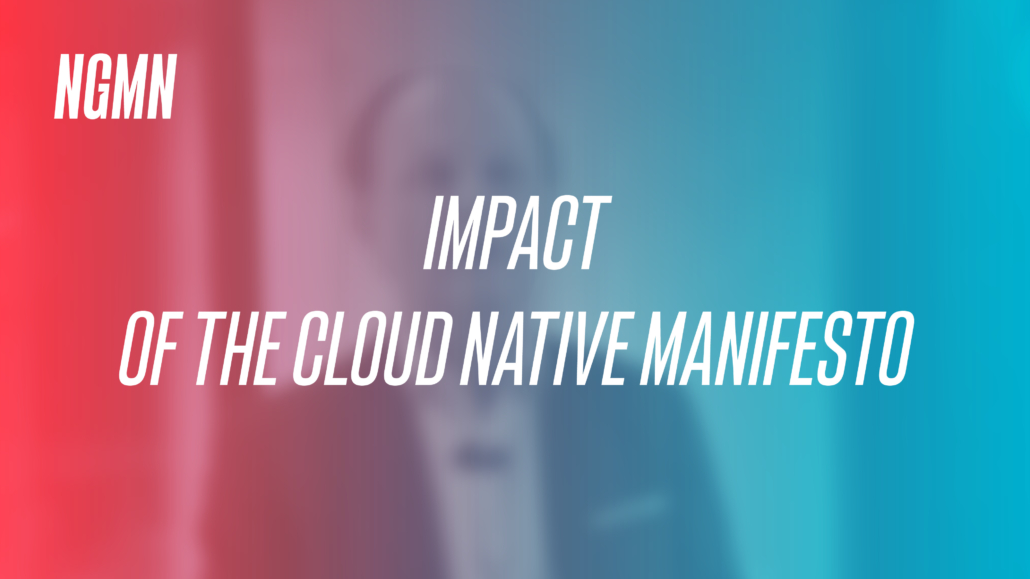Strategic Focus Topics
NGMN’s Strategic Focus Topics reflect its objectives and working principles, focusing on the priorities set by the NGMN Alliance Board.
These topics are continuously adapted to align with NGMN’s evolving priorities, ensuring responsiveness to the mobile industry’s changing landscape.
For 2025 and beyond, NGMN’s priorities include driving 5G’s full implementation and advancing the three Strategic Focus Topics:
- Mastering the Route to Disaggregation
- Green Future Networks
- 6G
Framework for Future Communication Networks
The “Framework for Future Communication Networks” is a strategic NGMN Board-led project focused at supporting Mobile Network Operators (MNOs) in shaping the evolution of future networks. As new technologies emerge, user demands continue to grow and network operation requires simplification, it is essential for operators to take an active role in guiding how future communication systems are defined – including the position and potential of 6G.
This project provides targeted, operator-driven guidance on key principles and requirements that will influence the design and direction of future networks. It builds on NGMN’s earlier contributions, such as the “6G Position Statement” and the “Radio Performance Assessment Framework”, and introduces fresh perspectives on traffic forecasts, integrated network solutions and user experience enhancements.
With its unique position as an operator-led alliance, NGMN facilitates collaboration and alignment across its global membership, ensuring that industry evolution reflects the real-world needs.
The following deliverable has been pubished:
Further deliverables are expected in Q3/2025.
Framework for Network Simplification
The “Framework for Network Simplification” is an NGMN Board-led initiative designed to support Mobile Network Operators (MNOs) in addressing the growing complexity of today’s networks. With operators managing multi-generational infrastructure (2G to 5G) and facing rapid technological shifts, the need for a simplified, agile and future-ready network environment has become critical.
This project outlines a high-level framework that MNOs can adopt to guide their transformation towards more streamlined architecture, operations and service delivery. It highlights key drivers such as evolving user expectations, the growing role of AI, cloud-native technologies and the need for sustainable evolution.
In addition, the project identifies essential enablers across domains — including cloud transformation, AI adoption, simplified governance and agile working models.
NGMN’s operator-driven approach ensures that this framework is rooted in real-world challenges and aligned with industry needs. It complements existing NGMN work on 6G and Network Automation while offering a comprehensive perspective on how simplification can be achieved across all network domains.
First deliverables are expected in Q3/2025.
Mastering the Route to Disaggregation
LEADING IN THE DEVELOPMENT OF OPEN, DISAGGREGATED, VIRTUALISED AND CLOUD NATIVE SOLUTIONS
Cloud Native Solutions
Following the publication of the Cloud Native Manifesto, NGMN has setup a new project in collaboration with the CNTi (Cloud Native Telecom Initiative) of LF Networking, envisioning a Cloud Native Assessment Methodology that provides valuable insights to the industry. Prime objective is to provide guidance to organisations committed to embark transformation journeys adopting Cloud Native networks by identifying prerequisites, requirements, and level of maturity of cloud nativeness. The project has moved into its initiation phase, by charting their Project Description followed by the contribution phase.
Network Automation and Autonomy based on AI
Objectives:
To achieve the transformation from network automation to autonomy through AI technology, NGMN will further conduct an analysis of technical requirements and implementation architecture research for network autonomy based on the network automation platform in this project.
From the perspective of technical and ecological requirements, in-depth discussions will focus on utilising open industrial cooperation models to consolidate industry consensus, unify technical approaches, provide R&D reference implementations, formulate industry standards, and promote the transition of the network from automation to autonomy.
The project produced a series of key publications, offering strategic guidance to the industry:
Green Future Networks
BUILDING SUSTAINABLE & ENVIRONMENTALLY CONSCIOUS SOLUTIONS
Project Lead:
- Saima Ansari, Deutsche Telekom
Work Stream Leaders:
- Energy Management: Antonio De Domenico, Huawei & Rishikesh Chakraborty, Vodafone
- Metering: Sabine Demel, Deutsche Telekom
- Environmental Sustainability and Reporting: Yuanyuan Huang, Orange & Yildiray Ornekli, Turkcell
Energy Management
- How to optimise use of renewable energy in mobile networks?
- Role of MNOs in wider energy management of energy grids
Metering
- Requirements and recommendations towards metering in transport networks
- Requirements and capabilities to compare energy efficiency of different RAN deployment options
Environmental Sustainability and Reporting
- Address challenges faced by telco industry for accurate assessment and reporting of sustainability efforts
Following deliverables were published:
6G
GUIDANCE AND REQUIREMENTS RELATED TO DESIGN CONSIDERATIONS AND NETWORK ARCHITECTURE EVOLUTION
Project Co-Leads:
- Quan Zhao, China Mobile
- David Lister, Vodafone
Objectives:
- Deliver impactful 6G insights and guidance from an operator’s perspective in order to provide timely guidance to the industry
- Play a key role in avoiding fragmentation of global 6G standards and ecosystem to achieve affordable deployments
- Identify a set of high-level business drivers including social responsibility aspects and MNO operational aspects
- Develop requirements by taking a customer centric view
- Engage with different stakeholders, monitor external 6G activities and facilitate bilateral exchange with external organizations at the right time
- Identify and analyse relevant SDO’s and industry organisations to maximize NGMN’s impact
The following deliverables were published:
- 6G Drivers and Vision (April 2021)
- 6G Use Cases and Analysis (February 2022)
- 6G Requirements and Design Considerations (February 2023)
- 6G Position Statement (September 2023)
- ITU-R Framework for IMT-2030 (February 2024)
- Network Architecture Evolution towards 6G (February 2025)
Currently the next phase scope of 6G is in definition.
Security Competence Team
The project is a vertical activity that supports the NGMN Work Programme in aspects of security matters.
Project Lead:
- Xiaoting Huang, China Mobile
Objective:
SCT’s objective is to analyse security challenges and propose comprehensive security requirements and recommendations related to network architecture, deployment, and operational aspects for 5G and beyond. Additionally, the initiative supports security analysis and addresses related topics raised by other NGMN projects and teams, ensuring a robust and secure framework for future telecommunications.
Following deliverables were published:
Supporting 5G’s Full Potential
All projects not aligned with our three strategic focus topics fall under ‘Supporting 5G’s Full Potential’. Currently, this applies to the BASTA project, which is described below.
BASTA (Base Station Antenna Architecture)
Objective:
Provide the industry with an updated set of parameter definitions, measurement methodologies and reporting processes. This enables a uniform way to describe the electrical and mechanical characteristics of the network side of the radio link (Base Station Antenna).
Recommendation for Base Station Antennas V13.0 will be published soon and is a detailed technical / reference document covering Active, Passive and hybrid Antenna systems. Providing RF, Electrical, Mechanical and environmental parameters and recommendations. Beside Supporting XML files to allow digital data exchange between vendors and operators.
Utilizing this common approach for describing “base station antennas” enables more efficient and cost-effective planning, engineering, and operation of mobile networks. This approach helps ensure the high-quality mobile service that users, businesses, and industries require.
Previous to the above described unified BASTA project, the BASTA project consisted of two work streams: Active and Passive Antennas, that are described below:
Active Antennas
The project team published Release 1 of their report in April 2020: Recommendation on Base Station Active Antenna System Standards V1.0.
The document includes:
- Electrical and mechanical key performance parameters
- Digital data exchange of specifications
- EMF exposure mechanisms for monitoring and controlling RF power
- Specification and testing of mixed passive-active systems using a mechanical integration kit.
The project team published Release 2 of their report in August 2021: Recommendation on Base Station Active Antenna System Standards V2.0.
The document includes:
- EMF field trials, field tests of counters
- Test modes
- FR2 AAS (mmWaves)
- GPS sensors.
Following deliverables were published:
- Recommendation on Base Station Active Antenna System Standards (September 2021)
- Recommendation on Base Station Active Antenna System Standards V3.0 (September 2023)
Passive Antennas
Following deliverables were published:
Base Station Antenna Requirements (Passive Antennas)
Project Leads:
- Hans Obermaier, Huawei
- Jürgen Rumold, Ericsson
- Roberto Vallauri, TIM
Objective:
The result of the project on Base Station Antenna Standards is an Implementation Recommendation which helps the telecommunication industry to establish industry-wide accepted antenna standards for the benefit of its customers.
The scope of the project is to:
- Collect existing base station antenna standards
- Develop specific recommendations on standards
- Update the currently existing publication
A subgroup on wind load and related topics has been defined, which currently works on parameter and method definition.
Following deliverables were published:
- Recommendation on Standards for Passive Base Station Antenna Systems V12.0 (April 2022)
- Recommendation on Base Station Antenna Standards V11.1 (March 2019)







